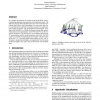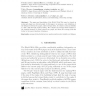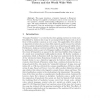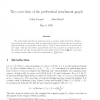350 search results - page 2 / 70 » Traffic-driven model of the World Wide Web graph |
VRML
1995
ACM
13 years 8 months ago
1995
ACM
We visualize the structure of sections of the World Wide Web by constructing graphical representations in 3D hyperbolic space. The felicitous property that hyperbolic space has ā...
WEBI
2001
Springer
13 years 9 months ago
2001
Springer
The pages and hyperlinks of the World Wide Web may be viewed as nodes and edges in a directed graph. In this paper, we propose a new deļ¬nition of the distance between two pages, ...
OHS
2000
Springer
13 years 8 months ago
2000
Springer
This paper introduces a Semiotic Appoach to Hypertext Theory. Having been applied to Informatics only in recent years, Semiotics promises a broader understanding of Hypertext as a ...
JCT
2007
13 years 4 months ago
2007
The preferential attachment graph Gm(n) is a random graph formed by adding a new vertex at each time step, with m edges which point to vertices selected at random with probability...
CN
1999
13 years 4 months ago
1999
CT The World Wide Web has since its beginning provided linking to and from text documents encoded in HTML. The Web has evolved and most Web browsers now support a rich set of media...




